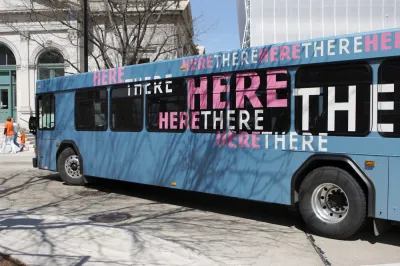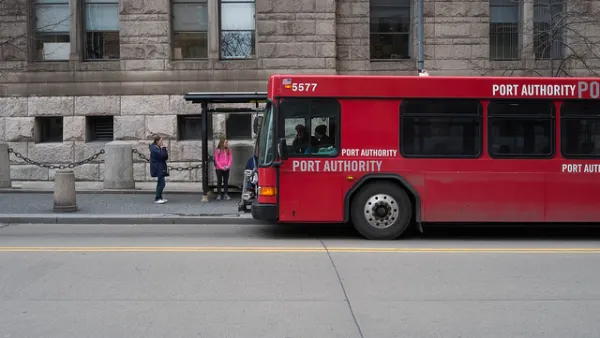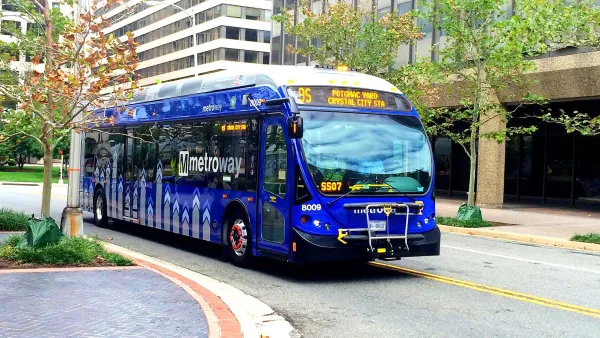Transit experts want to optimize the benefits of the biggest network of separated busways in the country.

Rather than building light rail, highways, or hyperloops, some advocates want Pittsburgh to look to its extensive busway system as a means to ease traffic, reduce greenhouse-gas emissions, and improve access to jobs.
Speaking to experts on transit and economic development, Ryan Deto recommends three basic strategies to expand the benefits of Pittsburgh's existing system.
-
Rebrand: Pittsburgh busways were originally named for colors, and the article suggests returning to this system. Currently, lines are named for the directions they take: South Busway, East Busway, and so forth.
-
Improve accessibility: Many stations are hostile to pedestrians and people with disabilities, Deto writes. Better ingress and street-facing design could improve visibility and use of the stations.
-
Encourage transit-oriented development: Deto points to studies suggesting that mixed-use development around busway stations could reduce poverty by providing access to jobs. Port Authority, which manages Pittsburgh buses, offers TOD guidelines, but they are not mandatory.
Advocates are pushing for a busway vision before potential changes to state and federal transit funding in 2022, when funding from the Turnpike Commission expires. A more thorough set of suggestions for Pittsburgh's busway network is explored in the article.
FULL STORY: How busways can lead Pittsburgh into an equitable public transit future

National Parks Layoffs Will Cause Communities to Lose Billions
Thousands of essential park workers were laid off this week, just before the busy spring break season.

Retro-silient?: America’s First “Eco-burb,” The Woodlands Turns 50
A master-planned community north of Houston offers lessons on green infrastructure and resilient design, but falls short of its founder’s lofty affordability and walkability goals.

Delivering for America Plan Will Downgrade Mail Service in at Least 49.5 Percent of Zip Codes
Republican and Democrat lawmakers criticize the plan for its disproportionate negative impact on rural communities.

Test News Post 1
This is a summary

Test News Headline 46
Test for the image on the front page.

Balancing Bombs and Butterflies: How the National Guard Protects a Rare Species
The National Guard at Fort Indiantown Gap uses GIS technology and land management strategies to balance military training with conservation efforts, ensuring the survival of the rare eastern regal fritillary butterfly.
Urban Design for Planners 1: Software Tools
This six-course series explores essential urban design concepts using open source software and equips planners with the tools they need to participate fully in the urban design process.
Planning for Universal Design
Learn the tools for implementing Universal Design in planning regulations.
EMC Planning Group, Inc.
Planetizen
Planetizen
Mpact (formerly Rail~Volution)
Great Falls Development Authority, Inc.
HUDs Office of Policy Development and Research
NYU Wagner Graduate School of Public Service





























